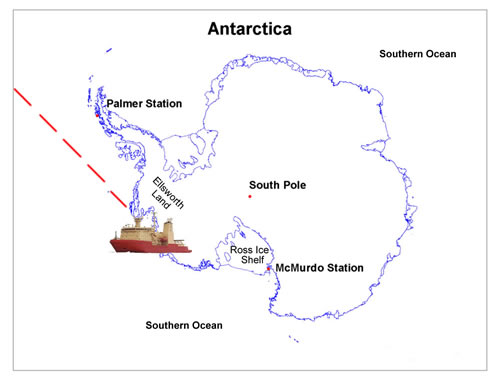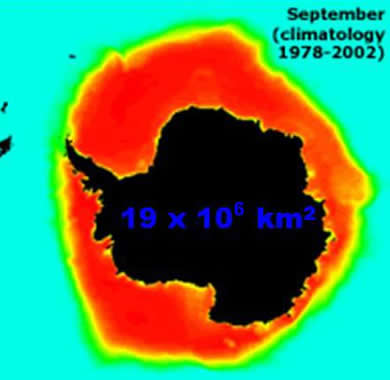Objectives
Where We're Going

(Leaving from Punta Arenas, Chile)

What We'll Know
The characterization of Antarctic sea ice thickness on a circumpolar quantitative basis will provide, for the first time, a fully quantitative baseline data set for monitoring of future change in the Antarctic sea ice cover. Using the coupling between thickness, physical property and remote sensing measurements, a full validation of altimetry (for ice thickness), and passive and active radar (for thin and thick ice characterization) will enable future monitoring to rely more on remote sensing than costly and regionally limited field surveys. Ice thickness is the principal quantitative measure of ocean-atmosphere exchanges and the data sets will therefore be the gold standard for validation of air-ice-ocean coupled models, and thereby increase confidence in their capability for future prediction. Sea ice mass balance determines salt and freshwater fluxes to the ocean, and therefore contributes directly to the formation of water masses and oceanic circulation characteristics in polar regions. Understanding the coupling between ice physics, biology and biogeochemistry will determine the direction and magnitude of gas fluxes and sediment contributions from sea ice derived fluxes. The role of ice-covered oceans in present day and past exchanges (as determined from continental ice core measurements) and relation to climate change will be better correlated and quantified.










